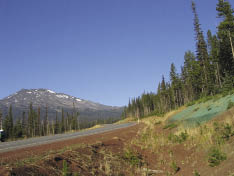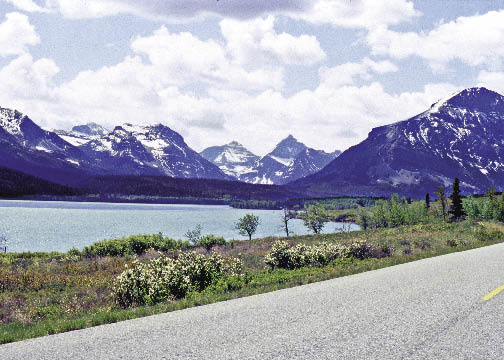1 Introduction
1.1 Introduction
Integrating societal goals for safe, efficient transportation with goals for ecological health is a crucial issue that is receiving increased attention (Forman and others 2003; NRC 2005). Today, most road projects involve modifications to existing roads rather than new construction (NRC 2005). As roads are modified or updated section by section, a tremendous opportunity presents itself to remedy the oversights of the past, mitigating environmental impacts and improving conditions for healthy ecosystems.
Native plants are a foundation of ecological function, affecting soil conservation, wildlife habitat, plant communities, invasive species, and water quality. Establishing locally-adapted, self-sustaining plant communities can also support transportation goals for safety and efficiency. Protecting existing native vegetation during construction and establishing native plants on roadsides following disturbance is key to integrating road systems into natural systems.
Past obstacles to establishing native plant communities on roadsides have been technical, informational, and organizational. Effective strategies and practical techniques for revegetating the disturbed conditions with limited resources must be made available to practitioners. Multiple disciplines, ranging from engineering to soil science, ecology, botany, and wildlife science, must be able to work cooperatively, not in isolation. Finally, improved interagency cooperation and planning processes that consider ecological effects at every step are necessary.
This report offers an integrated approach to facilitate the successful establishment of native plants along roadsides and other areas of disturbance associated with road modifications. It guides readers through a comprehensive process of: 1) initiating, 2) planning, 3) implementing, and 4) monitoring a roadside revegetation project with native plants.
1.2 The Ecological Effects of Roads
The ecological effects of roads are widespread. The road system of the United States is over 4 million miles long, paved roadways covering roughly 0.5% of the total land area of the country (NRC 2005). The total road corridor (paved road plus roadside or right-of-way) covers over 1% of the nation's surface, an area equal to the size of South Carolina (Forman and Alexander 1998). If unpaved roads are also included, the percentages dramatically increase. The ecological effects of roads extend into a zone far beyond the edge of the pavement, with impacts including habitat fragmentation, wildlife mortality, noise and chemical pollution, disruption of hydrologic cycles and water quality, increased erosion, and the potential creation of transportation corridors for noxious and invasive weeds that can invade adjacent lands. With these considerations, the estimate is that 15% to 20% of the United States is ecologically impacted by roads (Forman and Alexander 1988). The enormous challenge of understanding and mitigating the ecological effects of roads deserves attention and dedication on local, regional, and national scales.
1.2.1 Past Oversights
Much of the existing road network was designed and constructed prior to the 1970s, before ecological health became a widespread concern among American citizens and before ecological science had evolved to address large-scale issues (Forman and others 2003). Safety and efficiency were the primary goals of transportation programs in the past, and the ecological impacts were largely overlooked in road planning, construction, and maintenance efforts. The impacts of roads on natural systems (habitat fragmentation, interruption of natural flows of water, and disturbances to animals, plants, soils, and other resources) were not well understood or considered. Lack of awareness about these factors led to a largely antagonistic perception of the relationships between natural systems and road systems. For example, without effective revegetation of the road disturbance with desirable plants, undesirable vegetation encroaches on the roadway. Undesirable vegetation can disrupt safety and visibility, leading to expensive and potentially hazardous maintenance measures. Conflicts with neighboring land uses could result if corridors for invasive weeds are established or if vegetation control measures are viewed as a health or safety concern by the community. These are all issues that arise when integration of ecology and road design is not considered during road construction or modification. Eventually, poorly integrated natural processes can threaten the function and structural integrity of the road itself, leading to premature deterioration of the road's infrastructure (Berger 2005).
1.2.2 Present Awareness
For over twenty years, the ecological effects of roads have been increasingly recognized by the Federal Highway Administration and by state and county transportation agencies (NRC 2005). Today, road effects on ecology are major concerns among private citizens, land management agencies, and the transportation community. Attempting to integrate ecological concerns into all phases of road design and construction processes is an emphasis. For example, legislation in some areas now requires road modification and construction projects to restore aquatic connectivity; fish passages have been built to reconnect natural water flows under roads. Other projects have dealt with roads that were deemed particularly dangerous to endangered species. These roads are being made more permeable to wildlife, greatly reducing losses by improving habitat connectivity, ensuring better visibility for drivers and animals, and creating safer underpasses or overpasses for wildlife (Forman and others 2003). Efforts to limit inappropriate road expansion and to obliterate unnecessary roads remain important. Where modification and increased capacity are needed, ecological health, safety, and efficient transport should not be seen as mutually exclusive goals. Understanding roadside environments, how they interface with adjoining lands, and how to minimize environmental impacts has become a key focus of the Federal Highway Administration (Fekaris 2006). Given political will and proper levels of attention, integration of environmental concerns with transportation can result in significant gains.
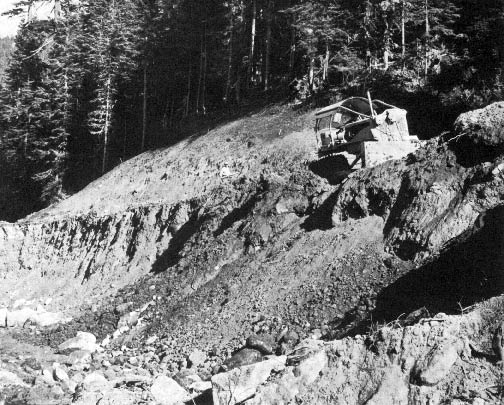
Figure 1.2 — Most existing roads were constructed prior to 1970, before ecological health became a widespread concern.
1.2.3 Trends in Road Construction
Roads are widespread, fairly permanent fixtures on the landscape and in the culture of the United States. Given current trends, road networks are expected to persist and expand over time. Current modifications predominantly involve updating infrastructure to increase capacity and to improve safety, including widening roads, replacing bridges, and reducing or altering curves and grades to make the road safer for motorists (NRC 2005). The opportunity to integrate ecological goals with transportation was largely overlooked when the road networks were originally constructed. However, as the nation's roads are being updated and modified, the opportunity cannot be ignored. While attempts to integrate ecological factors are positive, much of the potential for improved integration is still largely unrealized. This has been due, in part, to a shortage of practical information and the absence of an integrated approach to the challenge. The question is, what can be done to balance societal desires for safe, efficient transport with requirements for a healthy environment? In other words, what can be done to help road systems function better with natural systems?
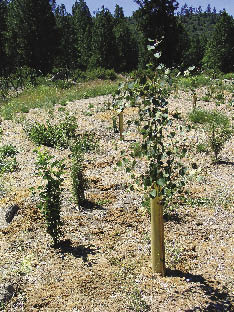
Figure 1.3 — Most road projects today do not involve building new roads, but rather modifying or obliterating existing roads. This photo shows recently planted trees on an obliterated section of highway in Oregon.
1.2.4 Challenges and Opportunities
The fact that the nation's road networks are in varying states of updates, repairs, and maintenance presents an opportunity to improve road systems so that they integrate better with natural systems. Planners and practitioners strive to understand detrimental effects associated with roads and how to mitigate them by minimizing the ecological footprint of roads and maximizing potential ecological benefits. Many groundbreaking resources have emerged to support these efforts. Road Ecology: Science and Solutions (Forman and others 2003) places the challenges into comprehensive frameworks, illuminating goals and principles for an ecological approach to transportation issues. Multiple intervention points are identified to help road systems function better with natural systems, integrating transportation goals for safety and efficiency with approaches to protect water, soil, vegetation, wildlife, and aquatic life. The Federal Highway Administration published a landmark book called Roadside Use of Native Plants (Harper-Lore and Wilson 2000) that brought the issue of native plant communities on roadsides to the forefront, highlighting the importance of native plants and their ranges of use. The National Research Council of the National Academies of Science built on the frameworks identified in Forman and others (2003) in their publication, Assessing and Managing the Ecological Impacts of Paved Roads (2005). Processes and procedures within the Federal Highway Administration, state departments of transportation, and other agencies are being improved for better integration.
In addition to these advances and other publications directly related to roads, many advances in the field of restoration ecology have distilled essential principles applicable to severely degraded sites (e.g., Munshower 1994; SER 2004; Clewell and others 2005; Claassen 2006). Also vegetation specialists within many federal agencies have come to consensus about what truly defines a "native" plant and have developed seed collection, transfer, and propagation guidelines to ensure that locally adapted materials are used for optimum results (Withrow-Robinson and Johnson 2006). In both the public and private sectors seed and plant producers and installers have been developing innovative methods to meet unique site conditions.
While the publications above assess the best available conceptual and theoretical information, each also recognizes extensive needs for further work, particularly in developing practical approaches to integrating ecological needs with transportation goals. Central to ecosystem function is native vegetation (SER 2004). However, much of the pertinent information related to protecting and establishing native plants on roadsides has been scarce, scattered, unexamined, or not translated into practice. This report is intended to bridge some of the informational, technical, and organizational gaps to facilitate successful roadside revegetation with native plants. An integrated approach is offered to support both planners and field-based practitioners in successfully revegetating roadsides and obliterated roads with native plant communities.
1.2.5 Why Revegetate Roadsides With Native Plants?
Long-term economic and ecological advantages can be gained by establishing desirable native plant communities on roadsides (Berger 2005). Desirable vegetation can support safety goals by reducing headlight glare, reinforcing the road alignment, serving as crash barriers, protecting view planes and visibility, controlling snow drifts, and reducing wind speeds (Forman and others 2003). Vegetation can improve the experience of the road user by creating natural beauty and diversity along the roadside. A self-sustaining native plant community on a roadside stabilizes slopes, protecting water and soil quality. Also, the establishment of healthy native plant communities is often the best long-term defense against invasive and noxious weeds. Maintenance costs for managing problematic vegetation are reduced, as is the pollution and controversy that sometimes results from roadside herbicide use (Berger 2005). Establishing healthy roadside vegetation can also help sequester carbon dioxide, one of the factors responsible for global climate change (Palumbo and others 2004).
Using desirable vegetation supports every aspect of the goals identified as Best Management Practices by the transportation community for road design. These include goals to:
- Produce a safe, cost effective, environmentally friendly, and practical road design that is supported by and meets the needs of the users;
- Protect water quality and reduce sediment loading into water bodies;
- Avoid conflicts with land use;
- Protect sensitive areas and reduce ecosystem impacts;
- Maintain natural channels, natural stream flow, and passage for aquatic organisms;
- Minimize ground and drainage channel disturbance;
- Control surface water on the road and stabilize the roadbed driving surface;
- Control erosion and protect exposed soil areas;
- Implement needed slope stabilization measures and reduce mass wasting;
- Avoid problematic areas; and
- Stormproof and extend the useful life of the road (Keller and Sherar 2003 p.3).
Clearly, the goals of safe and efficient transportation and the goals of establishing and protecting native vegetation overlap; when properly integrated, native vegetation supports road objectives. At the same time, considering vegetation as part of road planning processes aids in minimizing and mitigating the ecological footprint of roads during and after construction. Native plants can provide wildlife habitat and improved connectivity for the length of the road (Forman and others 2003). Understanding vegetation and forage preferences, and careful design that accounts for visibility and safety, can guide animals to safe passageways for travel while minimizing dangerous interactions with vehicles. The presence of birds and small animals can be enhanced when appropriate plant species are established. Processes that work for roadside revegetation are also applicable to the process of obliterating roads where roads are no longer needed.
Despite the potential benefits, many past attempts at roadside revegetation have not succeeded. Although revegetation was considered important, some efforts emphasized seeding of exotic plants; these species were perceived as cheap, readily available, and easy to establish on disturbed sites. This practice has not been effective or self-sustaining; either the exotic grasses spread to become problematic weeds, or failed to persist because they were not locally appropriate species. Once established, exotics may preclude reintroduction of desirable natives. In other cases, little consideration was given to establishing roadside vegetation during or after construction; if vegetation was considered, it was often as an afterthought. A short-term approach to revegetating roadside disturbances often predominated past efforts, while efforts toward long-term development of native plant communities did not receive adequate consideration. The ineffectiveness of revegetation efforts in the past has resulted in such problems as erosion and sediment loading, affecting soil and water quality. Visually, unvegetated road disturbances diminish the experience of the road user and economically translate into high costs associated with ongoing maintenance.
Past shortcomings may be attributed to past approaches. Past approaches were often piecemeal, lacking the cooperation and coordination of disciplines necessary to fully integrate native vegetation into the road planning and construction processes. Revegetation specialists typically worked in isolation from engineers, and sometimes even the biological specialists (soil scientists, botanists, wildlife biologists) failed to coordinate their knowledge and efforts. Success will require both practical and technical information and a systematic, comprehensive approach.
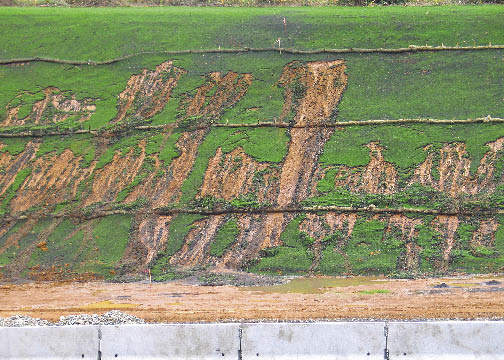
Figure 1.4 — Steep slopes are often difficult to revegetate and many past attempts at roadside revegetation did not succeed. Inexpensive and readily-available exotic plants either failed to establish or became weeds. Integration of revegetation techniques into road planning and implementation increases the chances of success.
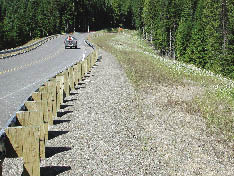
Figure 1.5 — Past shortcomings can often be attributed to a lack of an integrated approach and proper coordination. This photo shows an area recently revegetated with native plants that has been sprayed with herbicide.
1.3 Objectives of This Report
This report brings theoretical and practical information to bear on the challenge of revegetating roadsides with native plants. Written by and for field-based practitioners and planners, it synthesizes a comprehensive, holistic approach that can be utilized to effectively revegetate roads. Given the unique ecological factors at play on each project, the report is not prescriptive, but rather provides principles and a step-by-step process for practitioners to use in the field to generate and implement their own locally-appropriate, context-sensitive revegetation plan. Examples and proven strategies are offered to serve these goals. Topics covered include how to:
- Improve interagency cooperation in order to think ecologically about road modifications and make revegetation an integral part of road design;
- Coordinate information and efforts to bring multiple disciplines like soil science, botany, ecology, wildlife science, and engineering together for a holistic approach to revegetation;
- Integrate goals for native vegetation establishment with transportation goals for safety, function, and efficiency;
- Mitigate harsh, drastically disturbed conditions of road disturbance areas to enable native plants to establish through natural colonization and/or active replanting; and
- Apply a step-by-step planning, implementation, and monitoring process, including mid-course corrections, to overcome potential pitfalls, resulting in cost-effective, successful establishment of native plants.
1.4 Scope
The complexity of ecologically-sensitive road design, implementation, and maintenance will require increasing cooperation from multiple sectors of society and multiple fields of practice and expertise. This report should be of interest not only to field-level practitioners and planners in both public and private sectors, but also to transportation and planning professionals, land managers, policy-makers, owners and operators of roads on county, state, and federal scales, and concerned citizens. Any agency or organization involved in altering, developing, operating, maintaining, or decommissioning roads will find this publication useful. The report is especially intended to serve field-based practitioners and planners of diverse backgrounds whose goal is to establish locally appropriate, low-maintenance native plant communities on roadsides.
Because integration of multiple sources of expertise is necessary for effective long-term revegetation, this report does not assume that the reader has a particular specialized background. Rather, the "revegetation specialist" addressed in the text may have a background in botany, ecology, soil science, engineering, biology, or other related areas of study. It is generally recommended that one practitioner be in charge of all the aspects of the revegetation project. This "revegetation specialist" will probably involve one or more other specialists during the planning process, depending on the project's complexity. The report states where specific expertise is required (genetics, soil diagnosis, and so on). In all cases, the input and cooperation of the individuals and agencies involved with the road project is assumed. Key milestones for communication and integration between engineers and non-engineers are highlighted.
The approach in this report is applicable to any type of road-related project that involves disturbances to soil and vegetation. Revegetation of roadsides adjacent to dirt, gravel, and paved roads would involve similar processes, although differences in scale and intensity of efforts would be required. This report applies to new construction or reconstruction and modifications of existing roadways. The principles and practices will also be applicable in revegetating other drastically disturbed sites with similar limiting factors to roadsides, such as gas, oil, or powerline rights-of-way, mine reclamation projects, and so on.
This report focuses on opportunities for intervention during road construction or modification. Long-term maintenance and management of established roadsides is discussed briefly, with references to related management practices and guidelines such as Integrated Roadside Vegetation Management (IRVM) (Berger 2005). Roads must be made more permeable to natural flows of water, animals, and plants if the road disturbance is to heal and not expand. Efforts to improve habitat connectivity and road permeability, as well as storm water drainage and created wetlands, can be supported by the revegetation practices described in this report. However, specific mitigations for these important topics are beyond the scope of this publication. Also beyond the scope are the myriad other potential ecological and social issues that affect, and are affected by, the engineering and transportation planning processes. Issues of social justice and community planning are not addressed. Larger policy-making and planning procedures are also beyond the scope of this report.
1.5 Approach
The establishment of native plant communities in order to re-initiate natural processes of succession is a cornerstone of most ecological restoration work (Dorner 2002). Effective revegetation on highly disturbed roadsides aims to initiate or accelerate processes of natural succession following disturbances. Three aspects are generally considered: 1) health (the functional processes of the ecosystem); 2) integrity (species composition and community structure); and 3) sustainability (resistance to disturbance and resilience) (Clewell and others 2005). While restoring plant communities to a pre-disturbance state is not a goal (or even a feasible idea) on highly disturbed roadsides, each of the above three ecosystem aspects can be improved with appropriate roadside revegetation practices. Establishing reference sites, or natural models for the desired recovery process, is key to identifying and overcoming limiting factors and accelerating succession by establishing native plants.
Native species play an important role in ecosystem development. If native species can colonize and become established on a disturbance, the processes of succession, including soil genesis and nutrient cycling, are initiated (Brown and Amacher 1999). In most cases, native plants are established on roadsides through seeding or planting, although sometimes passive revegetation (natural colonization) is possible where native seed banks are nearby and limiting factors are mitigated.
1.5.1 What is the "Roadside"?
In this report, the term "roadside" refers to any area of disturbance associated with road maintenance, modification, or construction, including waste areas and source pits associated with construction. The roadside includes the sides of the road corridor beyond the paved road (shoulders and verges), including impacted or maintained roadside areas within the right-of-way (ROW). The roadside area to be considered is sometimes narrow, but sometimes extends several hundred feet or more beyond the edge of the road surface, depending on the project. In some situations, revegetation efforts may encompass areas beyond the ROW that are affected by or affect the road. The area where the revegetation specialists will be focusing their efforts is usually dependent on two factors: ownership of the ROW and surrounding lands, and areas of disturbance (construction footprint). Most roadsides represent drastically disturbed environments, where soil may be severely compacted and consist of a mixture of subsoil and parent material. Beneficial microorganisms, nutrients, and organic matter necessary to sustain plant growth may be absent or severely depleted. Often, slopes can be very steep and inaccessible, exposed to the erosive effects of wind and water. These environments represent a revegetation challenge of high intensity and magnitude.
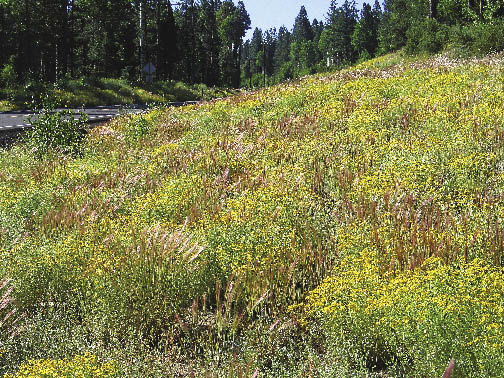
Figure 1.6 — The establishment of native plant communities is the cornerstone of ecological restoration.
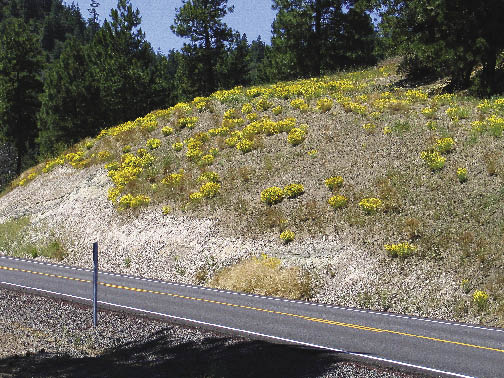
Figure 1.7 — "Roadside" refers to disturbed areas resulting from road construction, modification, or improper maintenance.
1.5.2 What are Native Plants?
"Native plants," as defined in this report, are locally-adapted, genetically appropriate native plant materials (Withrow-Robinson and Johnson 2006). These plants are best suited evolutionarily to the local conditions, and generally require less maintenance and persist longer than non-local species. When properly established, they form plant communities with the potential to be self-sustaining and self-perpetuating over time, requiring little or no input from humans to persist.
Challenges to establishing native plants on roadsides are significant, partially due to difficulties in obtaining appropriate materials. However, the technological capacity of native plant propagation and outplanting efforts in both private and public sectors has increased significantly in the past decade. Innovative stocktypes and application methods have made roadside revegetation more effective. Recent policy mandates from many federal agencies that manage roads now require the use of native plant materials as the first choice in revegetation efforts, thereby making roadside revegetation an important and expanding frontier for native plant suppliers.
Recent Policies Mandating Native Plants for Revegetation
Many land management agencies have policies mandating the use of native plants as the first choice in revegetation efforts. For example, the USDA Forest Service has the following policies in place applicable to road projects on Forest Service lands:
- National Native Plant Materials Policy: "Native plant materials are the first choice in revegetation ... " (USFS 2005)
- BAER Manual (FSM 2523): " ... when practical, use genetically local sources of native species ... " (USFS 2003)
- National Fire Plan Strategy: " ... promote the establishment of local sources of native seed and other plant material ... " (USFS/USDI 2001)
- R6 Revegetation Policy: " ... use local native plants to the extent practicable ... " (USFS 2004)
- NW Forest Plan; Interior Columbia Basin Ecosystem Management Project: " ... maintain and restore native species and ecosystems ... " (USFS/USDI 1994; USFS 2006)
- Federal Register Notices: " ... promote the use of native plant materials in revegetation for restoration and rehabilitation ... native plant materials are the first choice in revegetation for restoration and rehabilitation efforts." (FRN 2006)
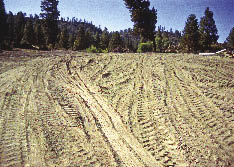
Figure 1.8 — Roadsides are often drastically disturbed and infertile environments with no topsoil, severe compaction, and a lack of beneficial microorganisms. They include obliterated roads and borrow sites as shown in this photograph.
1.5.3 Goal-Oriented, Context-Sensitive, and Integrated
The overall approach in every aspect of this report is: 1) goal-oriented, 2) context-sensitive, and 3) integrated (Clark and others 2001). The goals of establishing and protecting native plant communities are considered along with transportation goals, including safety, efficiency, and cost-effectiveness for the life of the road. This is not an idealistic approach; while recognizing that resources are limited and conditions are degraded, the approach is technically and economically feasible and still enables roads to integrate with ecological processes.
Sensitivity and appropriateness to the local context is an essential part of successful revegetation. This report is intended to facilitate the process of developing locally appropriate, context-sensitive prescriptions on a project-by-project basis, integrating top-down and ground-up information to meet the specific challenges at hand. For this reason, the report does not provide cookbook-type "recipes" or specific prescriptions. For example, no one-size-fits-all seed mix exists for roadside revegetation. Any information source emphasizing generalized prescriptions should be treated with suspicion. The process and tools needed to arrive at context-sensitive solutions are not difficult to apply; by following the steps outlined in this report, practitioners will be able to generate the information they need.
The approach integrates multiple disciplines and the efforts of multiple agencies and participants from both private and public sectors in a comprehensive process for effective revegetation with native plants. The report was written with inputs from specialists in soil science, botany, ecology, plant pathology, environmental management, and engineering, and is based on experiences in revegetating a range of diverse projects in the Pacific Northwest. The principles and methods used are broadly applicable nationwide.
1.6 How This Report Is Organized
The process of roadside revegetation consists of four stages: 1) initiation, 2) planning, 3) implementation, and 4) monitoring and management. In Initiation, the revegetation specialist must gain an understanding of the agencies and cooperators involved in order to develop key relationships and navigate through the decision-making process. Synchronizing timelines for revegetation with road planning and construction is essential to ensure that conservation and revegetation is an integral part of the process. The Initiation chapters also help the reader to effectively interpret engineered road plans and communicate using standard terminology. The Planning chapters guide the reader through the process of understanding project objectives, assessing the site, designing mitigating treatments, strategizing revegetation procedures, and creating a revegetation plan. The Implementation chapters provide information on how to make the project unfold in the field, including coordinating contracts, budgets, and schedules. Implementation Guides provide practical "how-to" information for working with soil and site treatments, obtaining plant materials, installing plant materials, and caring for plants in the field. Finally, the Monitoring chapters describe how to assess the overall effectiveness of the revegetation project to contribute to adaptive management and future knowledge, and to correct any shortcomings in order to achieve project objectives. A summary of the process is provided in Figure 1.9 and Table 1.1.
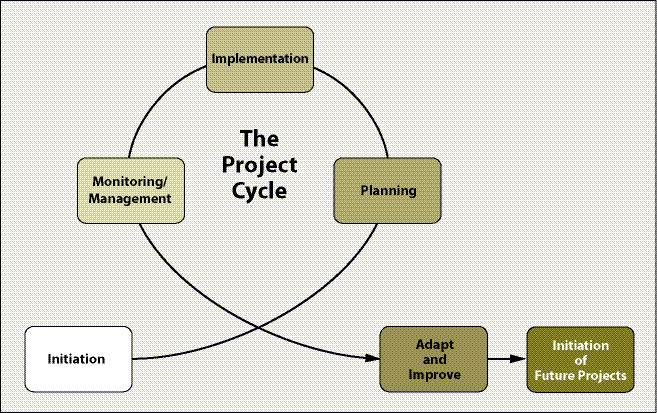
Figure 1.9 — The project cycle consists of four phases: initiation, planning, implementation, and monitoring/management.
1.6.1 Initiation Overview
Effective roadside revegetation requires not only technical skills, but an ability to cultivate relationships and navigate the decision processes so a project will run smoothly. Road construction, alteration, or decommissioning involves a variety of land management agencies, programs, and regulations. The process of initiating a project is discussed in two parts. Initiation Part One orients the reader to learn about agency procedures for the organizations involved with road projects. Timelines, budgetary issues, and interface opportunities are outlined to enable the revegetation specialist to integrate revegetation efforts with the overall process of road planning and construction. Attending meetings and coordinating with key contacts within agencies are important tasks in the early stages of the project.
Initiation Part Two provides the revegetation specialist with information to understand the current project site conditions, as well as predict the future condition of the project site following road construction. The revegetation specialist will become familiar with reading and interpreting road plans and understanding terminology. This ability enables the specialist to communicate effectively about engineering plans, contribute fully to minimizing the adverse environmental impacts, and ensure that revegetation is an integral part of the efforts.
1.6.2 Planning Overview
Planning forms the foundation of future work. The Planning section of the report guides the reader through a comprehensive, holistic process culminating in the production of a revegetation plan. The process of planning is organized into four phases.
Phase One involves defining four essential aspects of the project: 1) the project objectives; 2) the management areas (revegetation units); 3) the models (reference sites ); and 4) the specific goals for each revegetation unit (desired future conditions, DFCs). Defining these steps requires a preliminary assessment of site characteristics, including vegetation, climate, and soil.
Phase Two defines site attributes and limiting factors. Factors critical for plant establishment, such as soil and climate, are assessed. Obstacles to revegetation, as well as available resources, are examined. A field investigation of each revegetation unit describes the site in depth and reveals how site characteristics will either support or limit achieving the DFCs. Based on the determination of limiting factors, a menu of possible mitigating measures for assuring plant establishment (short-term) and plant community development (long-term) is developed.
Phase Three matches plant species, genetic sources, stocktypes, and planting methods to the environmental conditions of the site. The vegetation is surveyed and analyzed. From a comprehensive list of species and plant communities present on the reference sites, the revegetation specialist determines which species are best adapted to the site and best suited to revegetation needs. Options for sources, stocktypes, and application methods are considered in order to achieve the desired results.
Phase Four combines all elements into a comprehensive strategy for revegetation. The possible options for site mitigation and revegetation methods are compared and considered, and the most promising are selected. Choices will be based on site factors and plant needs, and on other considerations, such as costs and availability of materials and services. There are always several ways to meet the revegetation objectives, and different options are considered in Phase Four. When preferred strategies have been selected, budgets and schedules are developed and recommendations are compiled and presented in the Revegetation Plan.
Section |
Chapter |
Goal |
Tasks |
Initiation Part One |
Chapter 2 |
Understand cooperators and decision processes |
Set up recordkeeping |
Identify cooperators: Who is involved? |
|||
Define cooperator processes, timelines, and milestones |
|||
Define objectives: What is the project trying to accomplish? |
|||
Initiation Part Two |
Chapter 3 |
Understand road plans and terminology |
Read and interpret road construction plans |
Understand key concepts and terminology |
|||
Planning Phase One |
Chapter 4 |
Orient to the project |
Determine revegetation objectives |
Define revegetation units |
|||
Select reference sites |
|||
Define the desired future conditions |
|||
Planning Phase Two |
Chapter 5 |
Assess site |
Identify limiting factors |
Consider mitigating measures for limiting factors |
|||
Assess site resources |
|||
Planning Phase Three |
Chapter 6 |
Analyze vegetation |
Complete vegetation assessment |
Create a comprehensive species list |
|||
Define plant communities and successional processes |
|||
Determine which species and groups of species will be used on the project |
|||
Identify target plant requirements |
|||
Create menu of potential stocktypes and plant establishment methods |
|||
Planning Phase Four |
Chapter 7 |
Integrate and strategize |
Finalize revegetation units and DFCs |
Integrate survey information and develop potential revegetation strategies |
|||
Compare and select revegetation strategies |
|||
Assemble revegetation plan |
|||
Chapter 8 |
Example plan |
Example revegetation plan |
|
Implementation |
Chapters 9 and 10 |
Implement |
Review plans with construction engineer |
Review revegetation treatment details and timelines |
|||
Develop contracts |
|||
Install treatments |
|||
Keep good records |
|||
Carry out quality control |
|||
Implement early maintenance and monitoring |
|||
Monitoring & Management |
Chapters 11 and 12 |
Monitor, evaluate, correct, improve |
Revisit project objectives and DFCs |
Develop monitoring strategy and protocols |
|||
Record data and observations |
|||
Evaluate data and apply any corrective measures |
|||
Organize and file project results |
|||
Share lessons learned |
|||
1.6.3 Implementation Overview
Implementation involves coordinating and cooperating with different contractors and agency personnel before, during, and after construction of the road. Treatments for soils and site conditions, obtaining plant materials, and installing and caring for plants are part of the implementation process. These chapters will help the reader to review plans with engineers, finalize treatment details and timelines, and develop the contracts necessary to successfully carry out the treatments. Keeping good records and carrying out quality assurance and early maintenance activities are essential aspects of the implementation phase. In all cases, coordinating the revegetation work with road construction or modification processes is a major challenge, and a key opportunity to improve conditions for native plants.
Implementation Guides are short sections illustrating how to implement and/or contract for a particular treatment or mitigation measure. Guides are provided for: 1) working with soil/site treatments, 2) obtaining plant materials, 3) installing plant materials, and 4) caring for plants.
1.6.4 Monitoring and Management Overview
Monitoring is necessary to determine if goals defined at the outset of the project have been met. Scope, methods, and parameters for monitoring are determined on a project-by-project basis. These must be developed so that sufficient and meaningful information is obtained efficiently and interpreted properly. Keeping written records throughout the process of roadside revegetation is essential to evaluate each project.
Monitoring continues several years after implementation, providing a chance to assess effectiveness and correct any shortcomings. In the Planning section, project objectives describe an overall vision for the project. The desired future conditions refined the objectives into specific, measurable goals for the project site. Monitoring is an opportunity to evaluate the effectiveness of the revegetation efforts as they relate to objectives and goals.
Monitoring is essential for adaptive management of the project. Adaptive management is a systematic approach to good management guided by a process of regularly assessing and learning from what works and does not work on a project. As a project develops, monitoring can be used to assess progress and plan any necessary corrections.
When statistical methods will be necessary, Monitoring Protocols describe statistical sampling design, data collection techniques, and analysis methods for quantifiable parameters to determine success of roadside revegetation projects.
Revegetating roadsides with native plant communities is a developing field. Practitioners are encouraged to share lessons learned, including successes and failures, to improve the knowledge base for future work.
1.7 Summary
Balancing ecological health with safe and efficient transportation is an enormous challenge. To protect environmental health and sustain the native plant communities of roadsides, conservation and revegetation efforts must be an integral part of road design and construction. The process of roadside revegetation requires communication, interdisciplinary practice, and interagency cooperation. This report guides the reader through a comprehensive process for initiating, planning, implementing, and monitoring a project in order to successfully establish and perpetuate native plant communities on roadsides. It is hoped that this report will advance the science and technology of this field and lead practitioners to more successful projects.
Chapter 2: Initiation Part One: Cooperators and Processes for Road Projects »


